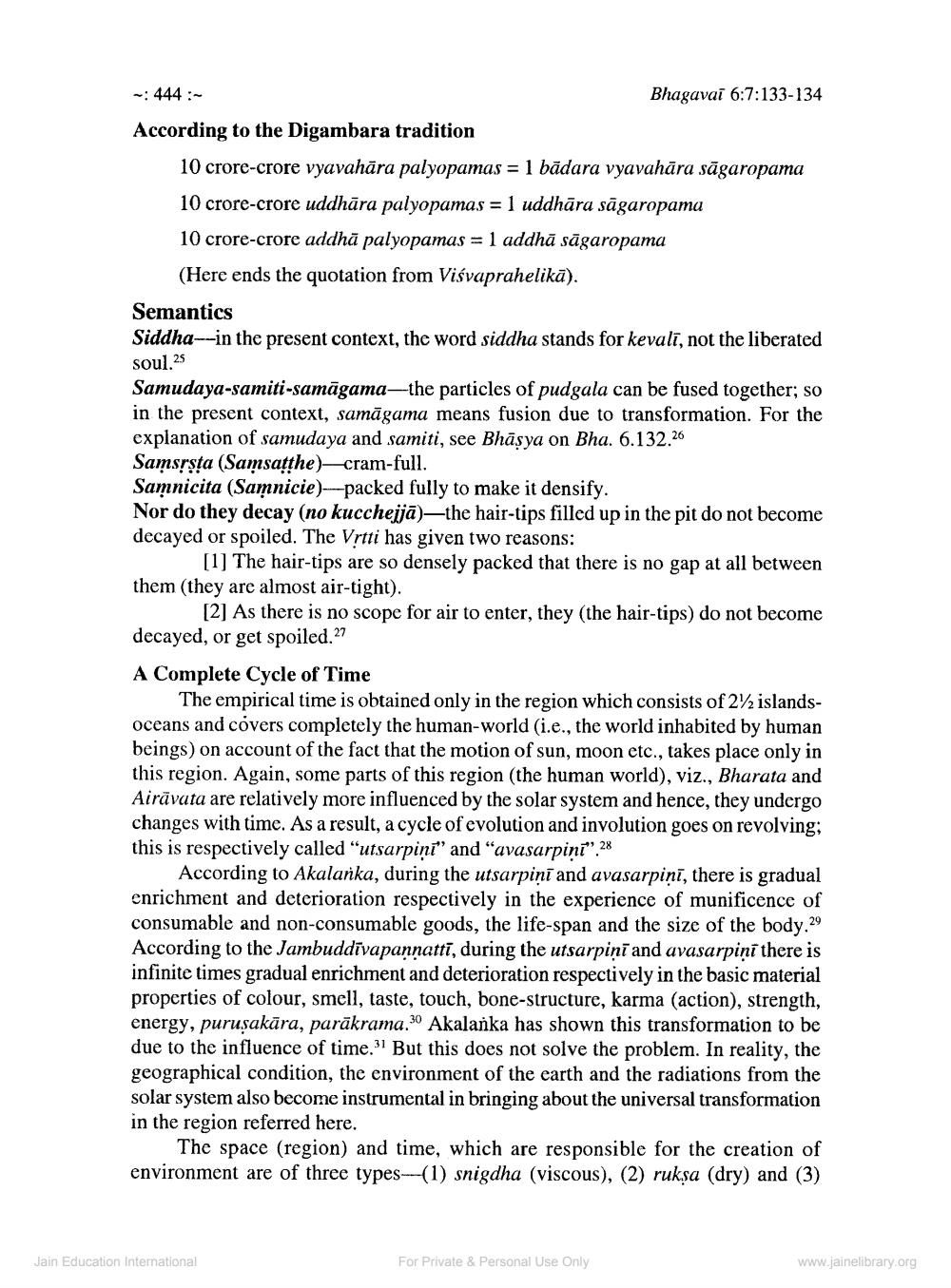________________
- 444 :
Bhagavai 6:7:133-134 According to the Digambara tradition
10 crore-crore vyavahāra palyopamas = 1 bādara vyavahāra sāgaropama 10 crore-crore uddhāra palyopamas = 1 uddhāra sāgaropama 10 crore-crore addhā palyopamas = 1 addhā sägaropama
(Here ends the quotation from Visvaprahelikā). Semantics Siddha--in the present context, the word siddha stands for kevalī, not the liberated soul.25 Samudaya-samiti-samāgama—the particles of pudgala can be fused together, so in the present context, samāgama means fusion due to transformation. For the explanation of samudaya and samiti, see Bhāsya on Bha. 6.132.26 Samsrsta (Samsatthe)—cram-full. Samnicita (Samnicie)--packed fully to make it densify. Nor do they decay (no kucchejjā)—the hair-tips filled up in the pit do not become decayed or spoiled. The Vrtti has given two reasons:
[1] The hair-tips are so densely packed that there is no gap at all between them (they are almost air-tight).
[2] As there is no scope for air to enter, they (the hair-tips) do not become decayed, or get spoiled.27 A Complete Cycle of Time
The empirical time is obtained only in the region which consists of 2% islandsoceans and covers completely the human-world (i.e., the world inhabited by human beings) on account of the fact that the motion of sun, moon etc., takes place only in this region. Again, some parts of this region (the human world), viz., Bharata and Airāvata are relatively more influenced by the solar system and hence, they undergo changes with time. As a result, a cycle of evolution and involution goes on revolving; this is respectively called "utsarpiņi" and "avasarpini" 28
According to Akalanka, during the utsarpiņi and avasarpini, there is gradual enrichment and deterioration respectively in the experience of munificence of consumable and non-consumable goods, the life-span and the size of the body.29 According to the Jambuddivapannattī, during the utsarpiņi and avasarpiņi there is infinite times gradual enrichment and deterioration respectively in the basic material properties of colour, smell, taste, touch, bone-structure, karma (action), strength, energy, purusakāra, parākrama.30 Akalanka has shown this transformation to be due to the influence of time. But this does not solve the problem. In reality, the geographical condition, the environment of the earth and the radiations from the solar system also become instrumental in bringing about the universal transformation in the region referred here.
The space (region) and time, which are responsible for the creation of environment are of three types (1) snigdha (viscous), (2) ruksa (dry) and (3)
Jain Education International
For Private & Personal Use Only
www.jainelibrary.org




